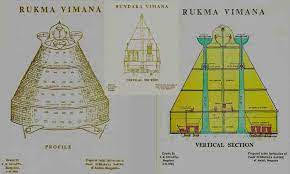Vishakhadatta(6th c.), was a Sanskrit playwright, Mudrarakshasa ("Rakshasa's Ring") is his sole
extant work.
The play is historically significant since its central
narrative is the ascent of Chandragupta Maurya (r. 321–297 B.C.E. ), the
founder of the Maurya dynasty, despite the fact that the play attributes his
victory to his crafty brahmin minister, Chanakya.
Although, in respect to the actual monarch, this picture is
wrong, the play portrays the king as a weak character, with the minister as the
true power behind the throne.
The narrative of the drama is convoluted, as is the case
with many Sanskrit plays, but the drama's climax occurs when the main
protagonists are dramatically saved from execution at the last minute.
Michael Coulson translated the play into English and
released it in the collection Three Sanskrit Plays in 1981.
Vishishthadvaita ("Qualified Non-Dualism") is a
Sanskrit word that means "qualified non-dualism." Vedanta One of the
branches of Vedanta, the philosophical school that claims to reveal the Vedas'
ultimate meaning and purpose (anta), the Hindu religious texts' oldest and
most authoritative texts.
The greatest figure in Vishishthadvaita is Ramanuja, an
eleventh-century philosopher who was central to its formulation, despite the
fact that he was building on earlier work.
Ramanuja believed that Brahman, or Supreme Reality, was a
personal god rather than an impersonal abstract concept, and that the most
significant kind of religious activity was devotion (bhakti).
His philosophical viewpoint, Vishishthadvaita Vedanta,
emphasized both of these ideas, and so contrasted with the Advaita Vedanta
school, created by the philosopher Shankaracharya.
The Advaita school adheres to the philosophical position of
monism, or the belief in a single impersonal Ultimate Reality, which they refer
to as Brahman.
Despite the appearance of difference and variety in the
perceivable world, Advaita adherents believe that reality is
"nondual" (advaita), meaning that all things are nothing but the
formless Brahman.
This assumption of diversity, according to Advaitins, is a
fundamental misunderstanding of the ultimate nature of things, as well as a
manifestation of avidya.
Although avidya is often translated as
"ignorance," it is better understood as a lack of genuine
understanding that leads to karmic bonding, rein carnation (samsara), and
suffering.
Because the real issue for Advaitins is a misunderstanding,
realization (jnana) was the best spiritual path to achieve ultimate liberation
(moksha).
The material universe and self have genuine and autonomous
existence, according to Ramanuja's formulation, while their existence is
ultimately anchored in God, whom he names as Vishnu.
The world emerges from God through an evolutionary process
based on the Samkhya model, but because matter is unconscious, it is both
similar to and dissimilar to God.
Human beings are similar to God in that they have God as
their source, but they differ from him in that they are subject to ignorance
and suffering.
God, according to Ramanuja and his followers, is not the
same as ourselves or the world, which are all thought to have real and
independent existence.
In a way that the Advaita proponents will never concede,
this notion of identity and difference makes the perceptible world real.
Ramanuja's stance differs from that of a later thinker,
Madhva, whose Dvaita Vedanta emphasized the enormous chasm between God and all
else.
Because of the disparity in capacities between the god and
the devotee (bhakta), Ramanuja and his followers have emphasized bhakti as the
most effective route of redemption.
Even after freedom, souls maintain enough separation from
God to allow devotion; liberation is seen as a perpetual relationship with God
rather than a loss of individuality.
For further detail, read John Braisted Carman's The Theology
of Ramanuja, published in 1974, and Sarvepalli Radhakrishnan and Charles A. Moore's
A Sourcebook in Indian Philosophy, published in 1957.
~ Kiran Atma
You may also want to read more about Hinduism here.
Be sure to check out my writings on religion here.








